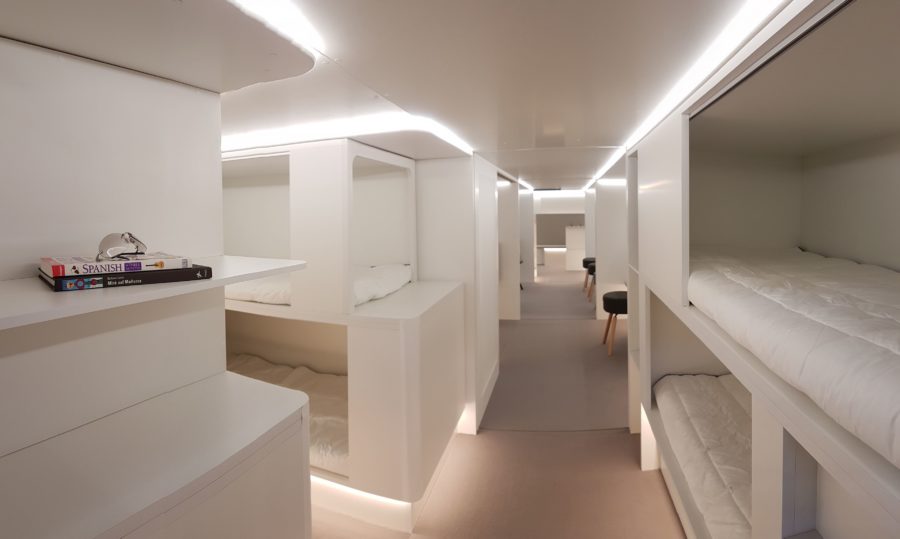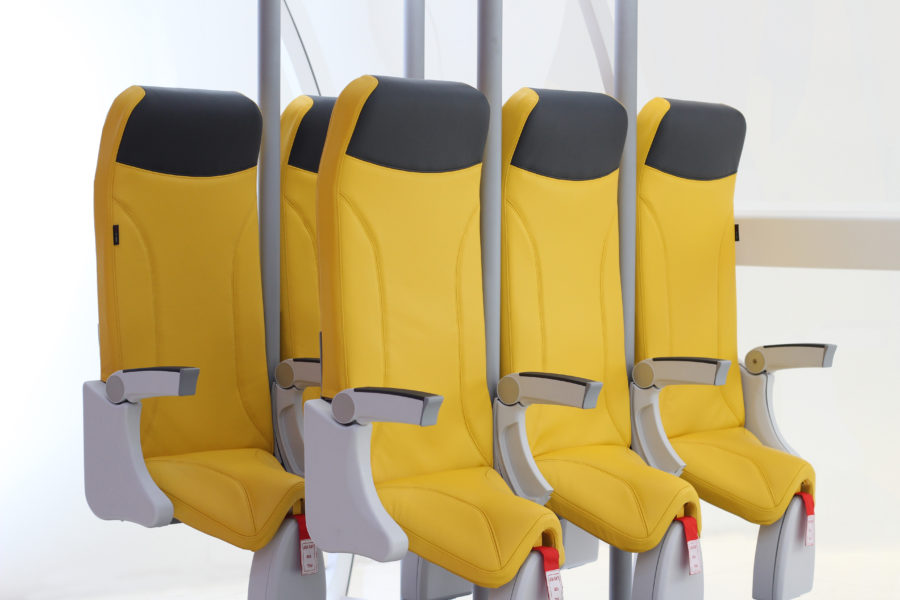Airbus and Zodiac Aerospace reveal designs for new passenger sleeping modules
Contributors are not employed, compensated or governed by TDM, opinions and statements are from the contributor directly

It has been a week of contrast for air passenger comfort, with news of an upright-seat design from Italy and an Airbus collaboration to introduce beds on the A330, both hitting the market in the last couple of days.
The modules, which would fit inside the aircraft’s cargo compartments, offer new opportunities for additional services to passengers, improving their experience while enabling airlines to differentiate and add value to their commercial operations. The new passenger modules will be easily interchangeable with regular cargo containers during a typical turnaround if required. Moreover, the aircraft’s cargo floor and cargo loading system will not be affected at all, as the passenger module will sit directly on it.
“A step change towards passenger comfort”
Head of the Airbus cabin and cargo programme, Geoff Pinner, said: “This approach to commercial air travel is a step change towards passenger comfort. We have already received very positive feedback from several airlines on our first mock-ups. We are pleased to partner with Zodiac Aerospace on this project which will introduce a new passenger experience and add value for airlines.”

Interested airlines will soon be able to choose from a range of different designs and permutations for the modules in “a catalogue of certified solutions by 2020 on A330 for retrofit and line-fit markets”.
The new solution to the passenger experience on long-haul flights builds on both Airbus’s and Zodiac Aerospace’s experience in producing innovative answers to longstanding problems, such as the Space-Flex PRM (Persons with Reduced Mobility) lavatory and galley module.

Christophe Bernardini, chief executive officer of cabin branch for Zodiac Aerospace said: “We are delighted to work with Airbus on this new and innovative project, which reaffirms our expertise in lower-deck solutions. An improved passenger experience is today, a key element of differentiation for airlines.”
With this kind of thinking, the future of passenger comforts seems to be assured. However, this week has also seen the unveiling of Italy based designers Aviointerior’s Skyrider 2.0 (below). The company describes the product: “It allows an ultra-high density in the aircraft cabin. Skyrider 2.0 opens the travelling experience to a wider passenger market, also creating a useful space for the introduction mixed classes boarded on the same aircraft.”

The Skyrider ‘seat’ is predicted by the company to increase airlines’ profits by enabling them to up headcount by up to 20%. Another benefit of the Skyrider is that it is less than half of the weight of current standard economy class seats.
Good news for emissions targets and sustainability. Responding to my question concerning what impact the new lower deck sleeping modules will have on the weight and fuel consumption of the A330, a spokesperson for Airbus said: “It would actually not be that much extra weight at all. This is because the modules themselves — which will be made of weight-saving materials – will be much lighter than a cargo container full of freight.
Also, the passengers who will sleep in them will not be ‘extra’ passengers on the flight. This is because these same passengers will have a ticket for a regular seat on the main-deck. Therefore, during take-off and landing these passengers will be sat in their seat on the main deck – which means that during take-off and landing the modules will have no people in them – i.e. another reason why there is only minimal extra net-weight on the aircraft.”


Comments are closed.